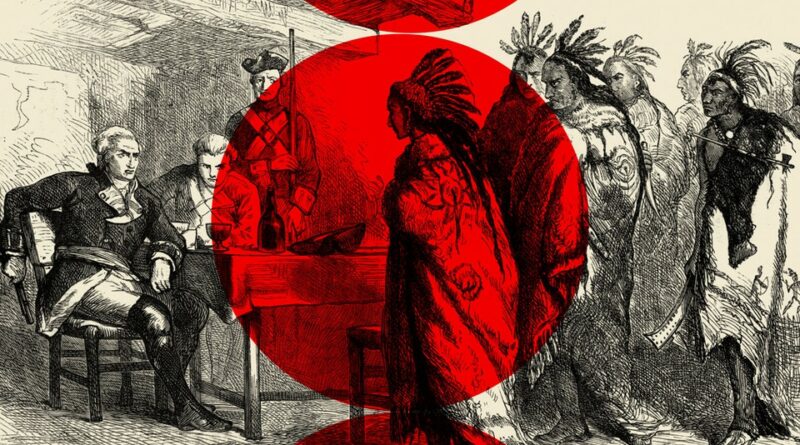The Royal Proclamation of 1763
[Please note that this page contains affiliate links. If you choose to purchase after clicking a link, I may receive a commission at no extra cost to you.]
The Royal Proclamation of 1763 was presented as a peace treaty between the French and the British, ending the Seven Years’ War, the Treaty of Paris, where France surrendered North American territories to Britain.
They introduced policies that were a way to assimilate the French population into British rule.
It was issued on October 7, 1763. However, the guidelines would fail and be replaced in 1774 under the Quebec Act.
The city of Quebec was put under British rule in September of 1759, as the British defeated the French on the Plains of Abraham battle.
The British ruler King George III had given the rights to several Native tribes under the protection for rights to hunting grounds on western lands. He would also prohibit private citizens from buying any First Nation lands.
King George III claimed absolute authority over the whole region in its entirety.
The King would ban any person privately from buying any Indigenous lands directly. In its place, he would keep the rights to purchase the land for just his heirs and himself.
The Proclamation did allow Indigenous peoples to sell their lands if they chose to. However, they were only allowed to sell it to representatives of the British monarch. It let the British Crown transfer First Nations lands to colonial settlers.
The Royal Proclamation would create the proclamation line. It was an imaginary line that separated the American Native lands west of the Appalachian Mountains from the British colonies on the Atlantic coast.
The Proclamation would contribute to what would start the American Revolutionary War in 1775.
This upset most people in the Thirteen Colonies who wanted to expand the west.
The Quebec Act
Negations between the British and the French took place on September 8, 1760, when the British agreed to give immunity from maltreatment and deportation, property rights, and freedom of religion to the people of New France.
They decided New France could have equal fur trade with the British, and they were allowed to leave for France with all their belongings if they chose to.
Montreal would soon surrender as well. The Treaty of Paris was signed on February 10, 1763, where
Britain would acquire power over the colony of New France. However, the new North American territories were organized better politically through the Royal Proclamation of 1763.
The new policies stated that the governor had now become the authority in the new province of Quebec. In addition, the French civil and criminal law replaced the English law, excluding all Catholics from any public position.
The new policies were met with resistance from the French Catholic society and American colonies. British governors Guy Carleton and James Murray were first to reject the policies because of the provisions of the Quebec Act in 1774.
However, the British Parliament increased the landmass of the Province of Quebec, and they would re-establish French civil law and allow churches to collect tithes.
The Royal Proclamation would lay the foundation for negotiating treaties with the First Nation residents of large portions of Canada. It is found in the Canadian constitution in section 25 of the Constitution Act, 1982.
The constitution is labelled “Indian Bill of Rights” and an “Indian Magna Carta.”
The main reason for The Royal Proclamation was to acquire Indigenous land rights, and today it barely recognizes and confirms pre-existing rights.

Sources:
https://www.rcaanc-cirnac.gc.ca/eng/1370355181092/1607905122267
https://www.thecanadianencyclopedia.ca/en/article/royal-proclamation-of-1763
https://www.history.com/topics/native-american-history/1763-proclamation-of

